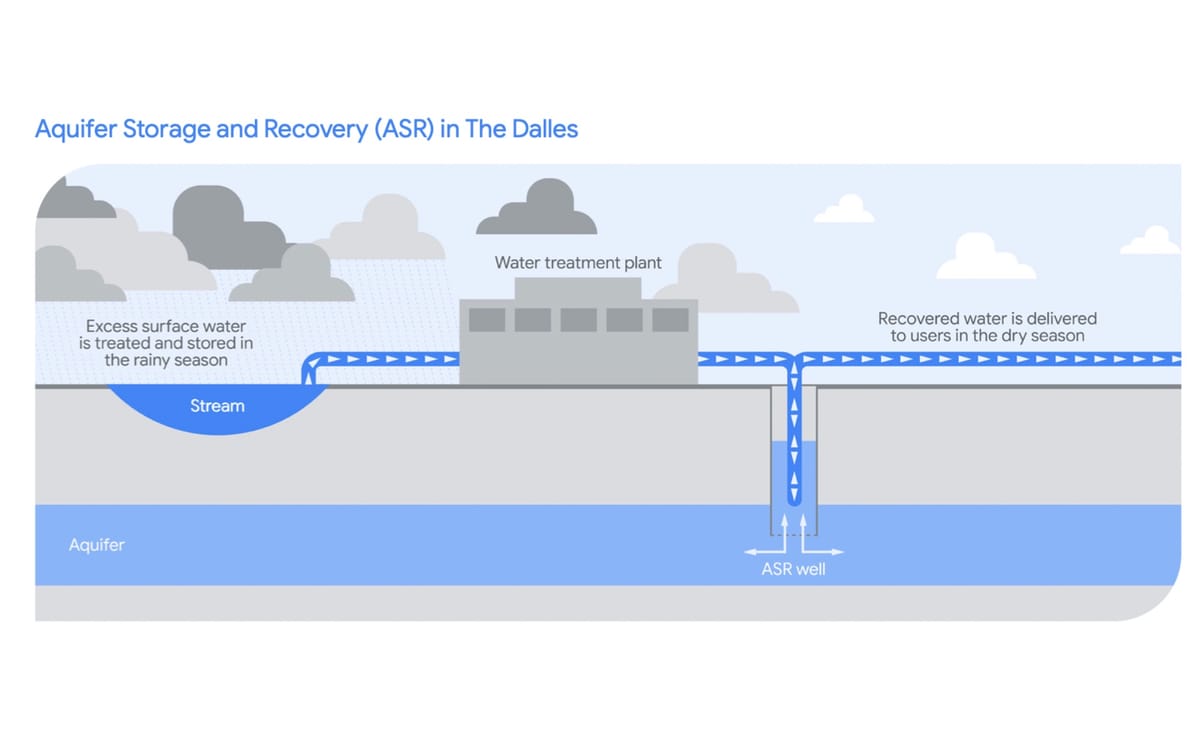Report on Wastewater Permit Approval in Bexar County and its Implications for Sustainable Development Goals
Introduction
A decision by the Texas Commission of Environmental Quality (TCEQ) to approve a wastewater discharge permit for a new housing development in Northwest Bexar County has raised significant concerns regarding the region’s commitment to several United Nations Sustainable Development Goals (SDGs). The permit allows for the construction of a wastewater treatment plant for the Guajalote Ranch development, which is projected to discharge up to one million gallons of treated effluent daily. This report analyzes the conflict through the lens of the SDGs, particularly those concerning clean water, sustainable communities, and ecosystem protection.
Conflict Analysis: Development vs. Environmental Stewardship
Permit Approval and Stakeholder Opposition
The TCEQ has formally approved a permit for Lennar Homes to establish a wastewater treatment facility. This decision follows a three-year opposition campaign by local residents and environmental advocacy groups, including the Greater Edwards Aquifer Alliance. The core of the opposition is rooted in concerns that the project directly undermines critical sustainability targets.
Key Concerns Aligned with Sustainable Development Goals
- SDG 6 (Clean Water and Sanitation): The primary concern is the potential contamination of the Edwards Aquifer, the main source of drinking water for over one million people. The discharge of effluent into a dry creek bed that recharges the aquifer is seen as a direct threat to water quality and safety.
- SDG 11 (Sustainable Cities and Communities): While the project addresses housing needs, critics argue it represents unsustainable urban development in an environmentally sensitive area, failing to integrate planning with the protection of natural heritage.
- SDG 15 (Life on Land): The project poses a risk to local ecosystems by altering the natural state of Helotes Creek and potentially degrading the quality of the aquifer, which supports a unique biodiversity.
- SDG 16 (Peace, Justice and Strong Institutions): Advocates argue that the TCEQ’s existing regulations are not sufficiently protective, calling into question the effectiveness and accountability of environmental governance institutions.
Environmental Impact on Water Resources (SDG 6)
Expert Hydrological Assessment
Dr. Ronald Green, a retired hydrologist, has stated that the wastewater effluent will inevitably end up in the Edwards Aquifer. He warns that sustained development of this nature will lead to the degradation of this vital and endangered water resource, fundamentally altering its quality for future generations.
Challenges to Achieving SDG 6 Targets
The approved project presents direct challenges to the achievement of specific targets within SDG 6:
- Target 6.1: Achieving universal and equitable access to safe and affordable drinking water is jeopardized by activities that risk contaminating the primary water source for a large population.
- Target 6.3: Improving water quality by reducing pollution is contradicted by the introduction of a new, large-scale effluent discharge point directly linked to a sensitive aquifer system.
- Target 6.5: Implementing integrated water resources management is undermined when development permits are issued without, according to opponents, adequate consideration for the long-term health of the entire water basin.
Governance and Future Outlook
Call for Regulatory Reform
Annalisa Peace, Executive Director of the Greater Edwards Aquifer Alliance, has called for a comprehensive review and strengthening of the TCEQ’s Edwards Aquifer protection rules. The current framework is viewed by advocacy groups as insufficient to prevent long-term degradation. Despite these concerns, TCEQ Chair Brooke Paup asserted that the agency’s evaluation found the permit to be protective and compliant with all applicable requirements.
Next Steps
It is anticipated that environmental groups will contest the TCEQ’s decision in district court. This legal challenge will continue the debate over how to balance urban growth with the fundamental principles of sustainable development, particularly the protection of irreplaceable natural resources as outlined in the SDGs.
Analysis of Sustainable Development Goals in the Article
1. Which SDGs are addressed or connected to the issues highlighted in the article?
-
SDG 6: Clean Water and Sanitation
This is the most prominent SDG in the article. The central conflict revolves around the approval of a wastewater treatment plant and its potential to contaminate the Edwards Aquifer, a primary source of drinking water for over a million people. The article explicitly discusses the discharge of effluent, water quality, and the protection of water supplies.
-
SDG 11: Sustainable Cities and Communities
The issue arises from a large-scale urban development project by Lennar Homes, which plans to build “thousands of new homes.” The article touches upon the conflict between housing development and environmental protection, questioning whether “this type of development… is totally inappropriate for that area.” This connects directly to sustainable urban planning and managing the environmental impact of cities.
-
SDG 15: Life on Land
The article highlights the potential damage to a specific ecosystem. The wastewater is planned to be discharged into “a dry creek bed [in] the upper reach of Helotes Creek,” which is directly connected to the Edwards Aquifer. The fight to “protect the aquifer” is a fight to conserve a vital inland freshwater ecosystem, which falls under the purview of SDG 15.
2. What specific targets under those SDGs can be identified based on the article’s content?
-
SDG 6: Clean Water and Sanitation
- Target 6.1: By 2030, achieve universal and equitable access to safe and affordable drinking water for all. The article states that the Edwards Aquifer is a critical resource for “the more than a million people that rely on the aquifer” for drinking water. The potential degradation of this source directly threatens safe drinking water access.
- Target 6.3: By 2030, improve water quality by reducing pollution. The core issue is the permit allowing the “discharge up to a million gallons of effluent from a wastewater facility, per day.” Residents and experts argue this will pollute and degrade the aquifer, directly contradicting the goal of reducing water pollution.
- Target 6.5: By 2030, implement integrated water resources management at all levels. The conflict between citizens, environmental groups (Greater Edwards Aquifer Alliance), a state agency (TCEQ), and a private developer (Lennar Homes) over the management of the aquifer demonstrates a challenge in integrated water resource management. Advocates are calling for “changes to TCEQ’s policies” and new rules to better protect the resource.
-
SDG 11: Sustainable Cities and Communities
- Target 11.3: By 2030, enhance inclusive and sustainable urbanization and capacity for participatory, integrated and sustainable human settlement planning and management. The article describes a multi-year fight by citizens (“We have been fighting the issuance of this permit for the last three years”) against a development they deem “inappropriate for that area,” highlighting a breakdown in participatory and sustainable planning.
- Target 11.6: By 2030, reduce the adverse per capita environmental impact of cities, including by paying special attention to… municipal and other waste management. The wastewater treatment plant is a form of municipal waste management for a new housing development. The central debate is about its adverse environmental impact on a crucial water source.
-
SDG 15: Life on Land
- Target 15.1: By 2030, ensure the conservation, restoration and sustainable use of terrestrial and inland freshwater ecosystems and their services. The efforts of the Greater Edwards Aquifer Alliance and local residents are aimed at the conservation of the Edwards Aquifer and Helotes Creek, which are inland freshwater ecosystems. Dr. Ronald Green calls the aquifer an “endangered resource” that will “suffer” unless actions are taken to protect it.
3. Are there any indicators mentioned or implied in the article that can be used to measure progress towards the identified targets?
-
Indicators for SDG 6
- Volume of wastewater discharged: The article explicitly mentions a key quantitative indicator related to Target 6.3. The permit allows the “discharge up to a million gallons of effluent from a wastewater facility, per day.” Monitoring this volume is a direct way to measure the pollution load on the ecosystem.
- Quality of drinking water: An implied indicator for Target 6.1 is the quality of the water in the Edwards Aquifer. The concern that the discharge “could affect your drinking water” and cause the aquifer to be “degraded” suggests that water quality testing for pollutants would be a necessary metric to track progress.
-
Indicators for SDG 11
- Level of participatory planning: While not a quantitative metric, the article implies a lack of effective public participation (an indicator for Target 11.3). The fact that citizens have been fighting the permit for three years and are now planning to “contest the decision in district court” indicates that the planning process was not perceived as inclusive or responsive to community concerns.
-
Indicators for SDG 15
- Health of the freshwater ecosystem: An implied indicator for Target 15.1 is the overall health of the Edwards Aquifer and Helotes Creek. Hydrologist Dr. Ronald Green warns that “the recharge is degraded — the aquifer is going to be degraded.” Measuring water quality, biodiversity in the creek, and aquifer recharge rates would serve as indicators for the conservation status of this ecosystem.
4. Summary Table of SDGs, Targets, and Indicators
| SDGs | Targets | Indicators |
|---|---|---|
| SDG 6: Clean Water and Sanitation | 6.1: Achieve access to safe and affordable drinking water. | Implied: Quality of drinking water for the more than one million people relying on the Edwards Aquifer. |
| SDG 6: Clean Water and Sanitation | 6.3: Improve water quality by reducing pollution. | Mentioned: Volume of wastewater effluent discharged (“up to a million gallons… per day”). |
| SDG 11: Sustainable Cities and Communities | 11.3: Enhance inclusive and sustainable urbanization and planning. | Implied: Level of citizen participation and influence in the development permit process (indicated by the three-year fight and planned court challenge). |
| SDG 11: Sustainable Cities and Communities | 11.6: Reduce the adverse environmental impact of cities. | Implied: Adequacy of wastewater management systems to prevent environmental harm. |
| SDG 15: Life on Land | 15.1: Ensure the conservation of inland freshwater ecosystems. | Implied: Ecological health and water quality of the Edwards Aquifer and Helotes Creek. |
Source: foxsanantonio.com







